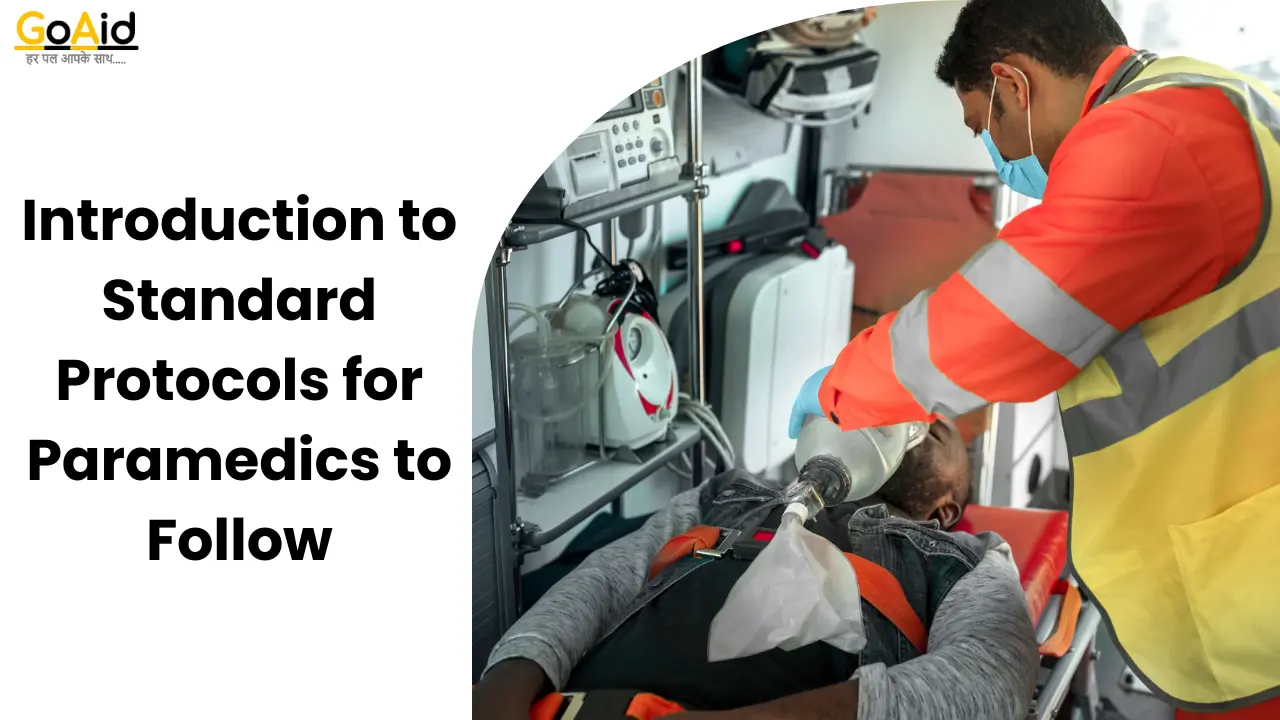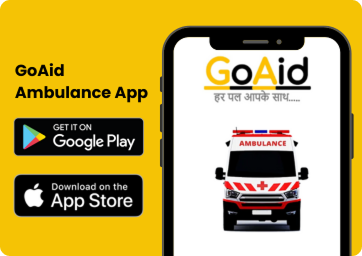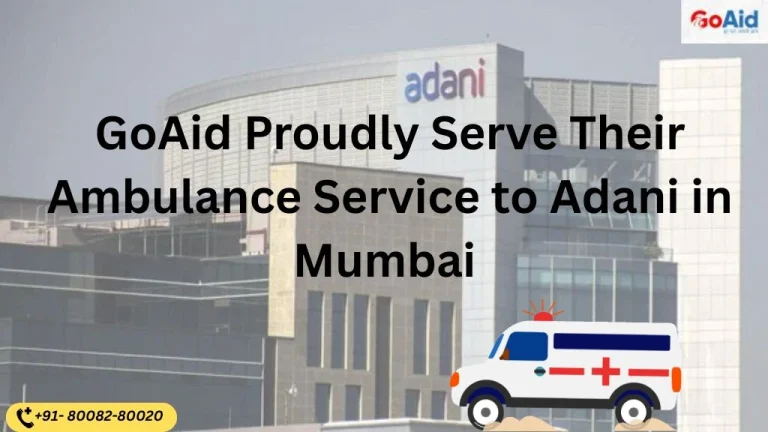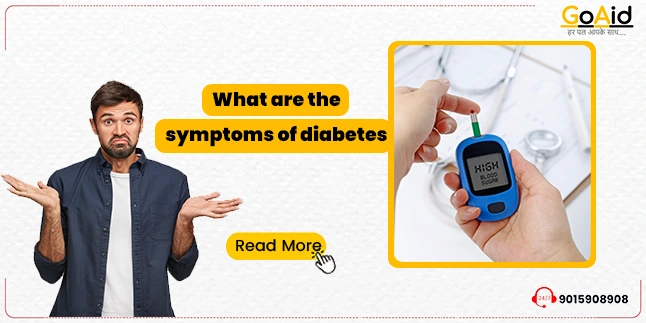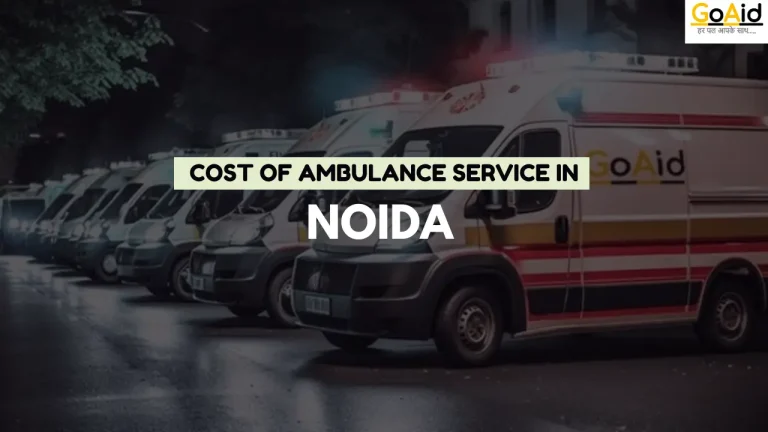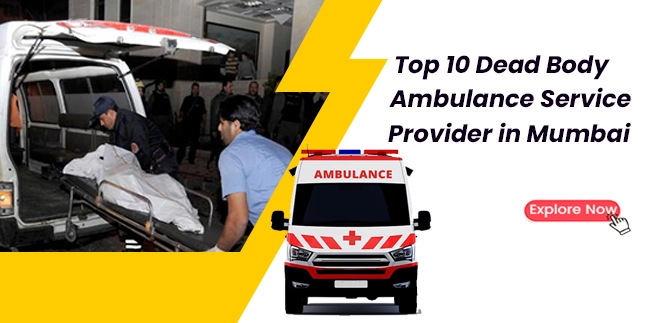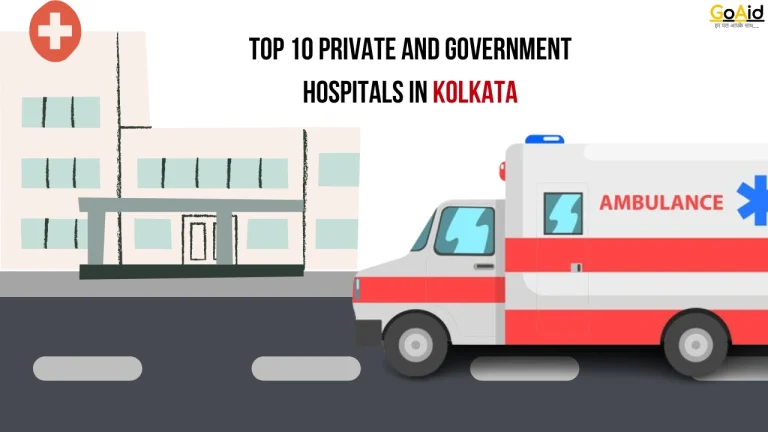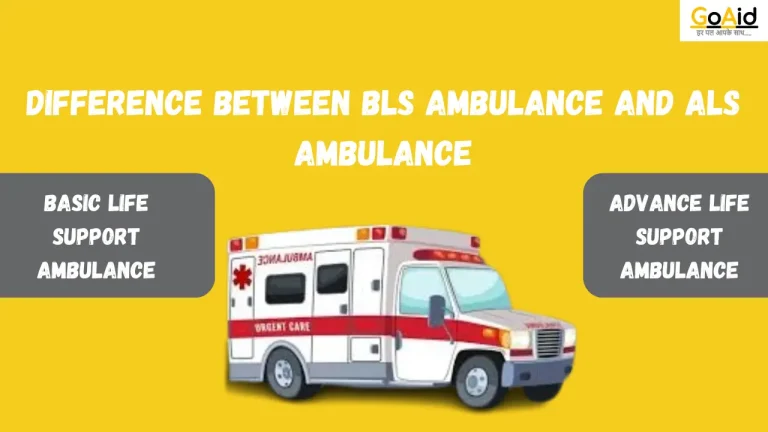In India, whenever we see an ambulance running to its destination, we can see a few people (Except the Ambulance Driver) inside that ambulance who are not the patients but are there to help the patients. They are known as Paramedics of the ambulances. Ambulance Paramedics always do their job with the Standard Operating Procedure of Paramedics or we can call it Paramedics SOP.
But do you know what are those standard operating procedures or some standard protocols for paramedics in ambulances? If you are not aware of that, then in this blog we have added all the information about Rules and regulations for paramedics of ambulances & Standard protocols for paramedics in an ambulance. If you are also excited to know all the details about it, then read this blog to the end.
So, letŌĆÖs start-
What are Paramedics of Ambulance?
Paramedics of an ambulance are highly trained medical professionals who provide emergency care to patients during transport to hospitals. They are skilled in advanced life support techniques, including cardiac resuscitation, trauma management, and administration of medications.
Paramedics work in high-pressure environments, responding swiftly to emergency calls and ensuring patients receive immediate and effective medical attention. Equipped with specialized equipment, they perform critical procedures such as intubation, IV therapy, and defibrillation.
Paramedics play a crucial role in the healthcare system, bridging the gap between the scene of an emergency and definitive care, ensuring patient stability and survival during transit.
Read More: Difference between BLS Ambulance and ALS Ambulance
The job of Paramedics in an Ambulance
These are the main job of Paramedics in an ambulance
- Administer Emergency Medical Care: Paramedics of an Ambulance provide immediate medical treatment for injuries and illnesses, including CPR, wound care, and fracture stabilization.
- Conduct Patient Assessments: Paramedics of an Ambulance evaluate the patient’s condition by checking vital signs, symptoms, and medical history to determine the appropriate treatment.
- Perform Advanced Life Support (ALS): Paramedics of an Ambulance execute advanced medical procedures such as intubation, IV therapy, and drug administration.
- Operate Medical Equipment: Paramedics of an Ambulance uses specialized equipment like defibrillators, ECG monitors, and oxygen delivery systems.
- Transport Patients Safely: Paramedics of an Ambulance ensure the safe and efficient transport of patients to medical facilities while providing continuous care.
- Communicate with Medical Staff: Paramedics of an Ambulance relay patient information and status updates to hospital staff and other medical professionals.
- Maintain Ambulance Equipment: Paramedics of an Ambulance regularly check and restock medical supplies and ensure all equipment is in working order.
- Follow Protocols and Guidelines: Paramedics of an Ambulance adhere to standard operating procedures, protocols, and regulations to ensure consistent and effective care.
- Document Medical Care: Paramedics of an Ambulance accurately record patient information, treatment provided, and any changes in condition during transport.
- Provide Emotional Support: Paramedics of an Ambulance offers reassurance and support to patients and their families during stressful and traumatic situations.
Full List of Rules and Regulations for Paramedics of Ambulances
This is the complete list of Rules and Regulations for Paramedics of Ambulance
| SN | Rules & Regulations | Description |
| 1 | Certification and Licensing | Paramedics must maintain current certification and licensing as required by state or national regulatory bodies. |
| 2 | Continuing Education | Regular participation in continuing education programs to stay updated with the latest medical practices and technologies. |
| 3 | Patient Confidentiality | Adhere to HIPAA and other privacy regulations to ensure patient information is kept confidential. |
| 4 | Medical Protocols | Follow established medical protocols and guidelines for assessment, treatment, and transport of patients. |
| 5 | Scope of Practice | Operate within the defined scope of practice and avoid performing procedures beyond certification and training. |
| 6 | Emergency Vehicle Operation | Adhere to all traffic laws and regulations while operating the ambulance, including the use of lights and sirens. |
| 7 | Infection Control | Implement infection control measures, such as using personal protective equipment (PPE) and proper sterilization techniques. |
| 8 | Documentation | Accurately and promptly complete all required patient care reports and documentation. |
| 9 | Drug Administration | Follow strict protocols for the administration, storage, and disposal of medications. |
| 10 | Equipment Maintenance | Regularly inspect and maintain all medical equipment and supplies to ensure they are in proper working order. |
| 11 | Communication | Maintain clear and effective communication with dispatch, other healthcare professionals, and emergency response teams. |
| 12 | Scene Safety | Ensure personal and team safety at the scene of an emergency, including assessing potential hazards. |
| 13 | Patient Consent | Obtain informed consent from patients or their legal guardians before providing treatment, when possible. |
| 14 | Ethical Conduct | Uphold ethical standards, including providing unbiased care regardless of a patient’s background or circumstances. |
| 15 | Cultural Competence | Respect cultural differences and provide culturally sensitive care to all patients. |
| 16 | Professional Behavior | Maintain a professional demeanor at all times, including in interactions with patients, families, and colleagues. |
| 17 | Conflict of Interest | Avoid conflicts of interest and disclose any potential conflicts to the appropriate authority. |
| 18 | Incident Reporting | Report any adverse incidents, errors, or safety concerns to the appropriate supervisory personnel. |
| 19 | Team Collaboration | Work collaboratively with other healthcare providers and emergency personnel to ensure coordinated and effective patient care. |
| 20 | Physical Fitness | Maintain physical fitness and health to meet the demands of the job and ensure the ability to perform essential duties. |
| 21 | Legal Compliance | Comply with all local, state, and federal laws and regulations governing emergency medical services (EMS). |
| 22 | Substance Use | Abstain from using alcohol or drugs that could impair the ability to perform duties; submit to random drug testing as required. |
| 23 | Patient Advocacy | Act in the best interest of the patient at all times, advocating for their needs and well-being. |
| 24 | Conflict Resolution | Use effective conflict resolution skills to manage disputes or disagreements in a professional manner. |
| 25 | Personal Development | Engage in personal and professional development activities to continually improve skills and knowledge. |
What are EMS Regulations in India?
EMS regulations in India encompass guidelines and standards for emergency medical services, ensuring timely and effective pre-hospital care. These regulations include the licensing and certification of paramedics, adherence to medical protocols, maintenance of ambulance equipment, and stringent infection control measures.
They also mandate proper documentation, patient confidentiality, and compliance with legal requirements, aiming to enhance the quality and reliability of emergency medical response across the country.
You can read more about the EMS Rules & Regulations in India Through this official Document: NHSRC India
Standard protocols for paramedics in an ambulance
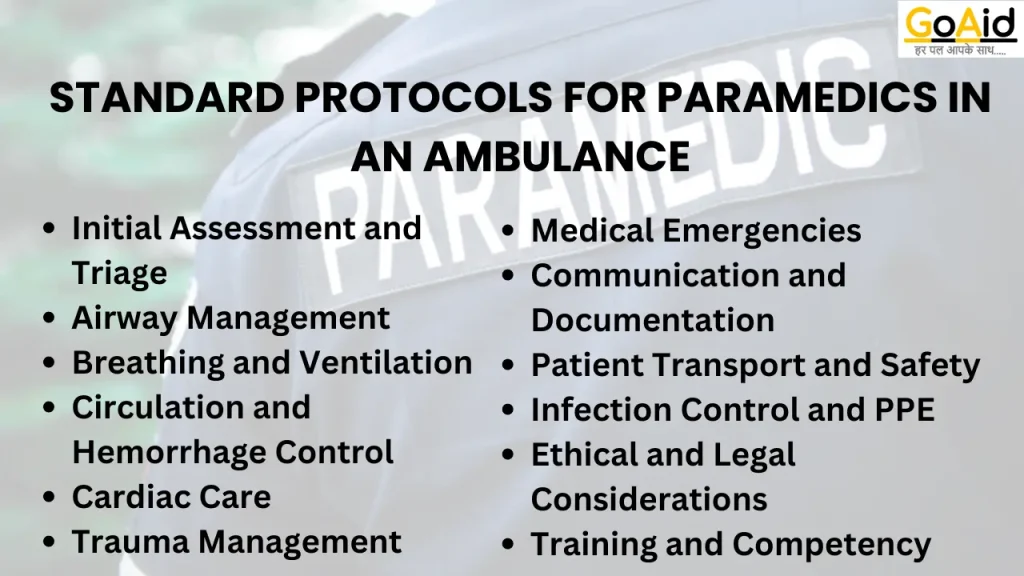
These are the Standard Protocols for Paramedics in an Ambulance:
Also Read: Top 10 government cancer hospitals in Delhi
1. Initial Assessment and Triage
- Conduct a rapid assessment of the patient’s condition using the ABC (Airway, Breathing, Circulation) approach.
- Prioritize treatment based on the severity of the patient’s condition.
- Utilize the Glasgow Coma Scale (GCS) to assess consciousness levels.
2. Airway Management
- Ensure the patient’s airway is clear and maintain patency using basic techniques such as head-tilt, chin-lift, or jaw-thrust maneuvers.
- Employ advanced airway management techniques like intubation or the use of supraglottic airway devices if necessary.
3. Breathing and Ventilation
- Provide supplemental oxygen to patients with respiratory distress or hypoxia.
- Use bag-valve-mask (BVM) ventilation for patients with inadequate breathing.
- Monitor and manage respiratory rate and effort, using mechanical ventilation if needed.
4. Circulation and Hemorrhage Control
- Assess and monitor vital signs, including pulse, blood pressure, and capillary refill.
- Control external bleeding using direct pressure, tourniquets, or hemostatic agents.
- Establish intravenous (IV) or intraosseous (IO) access for fluid resuscitation and medication administration.
5. Cardiac Care
- Perform cardiopulmonary resuscitation (CPR) and use an automated external defibrillator (AED) for patients in cardiac arrest.
- Monitor and interpret electrocardiograms (ECGs) to identify cardiac dysrhythmias.
- Administer cardiac medications as per protocols (e.g., aspirin, nitroglycerin, epinephrine).
6. Trauma Management
- Stabilize the cervical spine in trauma patients using cervical collars and backboards.
- Treat fractures and dislocations with splints and immobilization devices.
- Manage chest injuries, including the use of chest seals for open chest wounds.
7. Medical Emergencies
- Administer medications for medical emergencies such as asthma, anaphylaxis, diabetic emergencies, and seizures.
- Use glucometers to check blood glucose levels in diabetic patients.
- Provide supportive care for patients with stroke symptoms, ensuring rapid transport to appropriate facilities.
8. Communication and Documentation
- Communicate effectively with dispatch, other healthcare providers, and receiving facilities.
- Provide a detailed handover report to the receiving medical team, including patient history, assessment findings, and treatments administered.
- Complete accurate and thorough patient care reports and documentation.
9. Patient Transport and Safety
- Ensure patient safety during transport, using appropriate securing devices and monitoring equipment.
- Maintain a calm and reassuring presence to reduce patient anxiety and discomfort.
- Follow protocols for safe lifting and moving of patients to prevent injury to both the patient and paramedics.
10. Infection Control and PPE
- Adhere to strict infection control practices, including the use of personal protective equipment (PPE) such as gloves, masks, gowns, and eye protection.
- Follow protocols for the cleaning and decontamination of equipment and the ambulance after each use.
- Dispose of biohazardous materials according to regulations.
11. Ethical and Legal Considerations
- Obtain informed consent from patients or their legal guardians whenever possible.
- Maintain patient confidentiality in compliance with relevant laws and regulations.
- Provide unbiased care, treating all patients with respect and dignity regardless of their background or circumstances.
12. Training and Competency
- Participate in ongoing training and professional development to maintain and enhance skills and knowledge.
- Stay updated with the latest protocols, guidelines, and best practices in emergency medical care.
- Engage in regular skills assessments and competency evaluations.
Standard Operating Procedures for Paramedics in an Ambulance
Standard Operating Procedures (SOPs) for paramedics in an ambulance in India are structured protocols that guide the delivery of emergency medical services (EMS) with consistency, efficiency, and adherence to best practices. These SOPs include:
- Patient Assessment: Systematic evaluation of vital signs, symptoms, and medical history to determine the severity of the patient’s condition.
- Treatment Protocols: Guidelines for administering medications, and performing procedures such as CPR, defibrillation, and airway management.
- Equipment Use and Maintenance: Procedures for using, cleaning, and maintaining medical equipment and supplies in compliance with safety standards.
- Infection Control: Protocols for preventing infection transmission, including proper use of personal protective equipment (PPE) and disinfection procedures.
- Communication: Effective communication with dispatch, medical control, and receiving facilities to relay patient information and receive medical direction.
- Transportation Guidelines: Procedures for safe and efficient patient transport, including vehicle operation, securing patients, and managing emergencies during transit.
- Documentation Requirements: Detailed documentation of patient assessments, interventions, and response to treatment in patient care reports (PCRs).
- Legal and Ethical Considerations: Compliance with legal regulations, patient confidentiality, consent laws, and ethical standards in patient care.
- Quality Assurance: Monitoring and evaluation of EMS performance through audits, feedback mechanisms, and continuous improvement initiatives.
- Training and Continuing Education: Regular training programs to update skills, learn new techniques, and maintain certification requirements.
- Community Engagement: Interaction with the community to educate about emergency response procedures, promote public health, and enhance community resilience.
- Disaster Preparedness: Preparedness plans and protocols for responding to mass casualty incidents, natural disasters, and other emergencies.
- Multidisciplinary Collaboration: Collaboration with other healthcare providers, law enforcement, and disaster response agencies for coordinated emergency response.
- Cultural Sensitivity: Respect for cultural differences and provision of culturally competent care to diverse patient populations.
Details about Ambulance Safety Guidelines
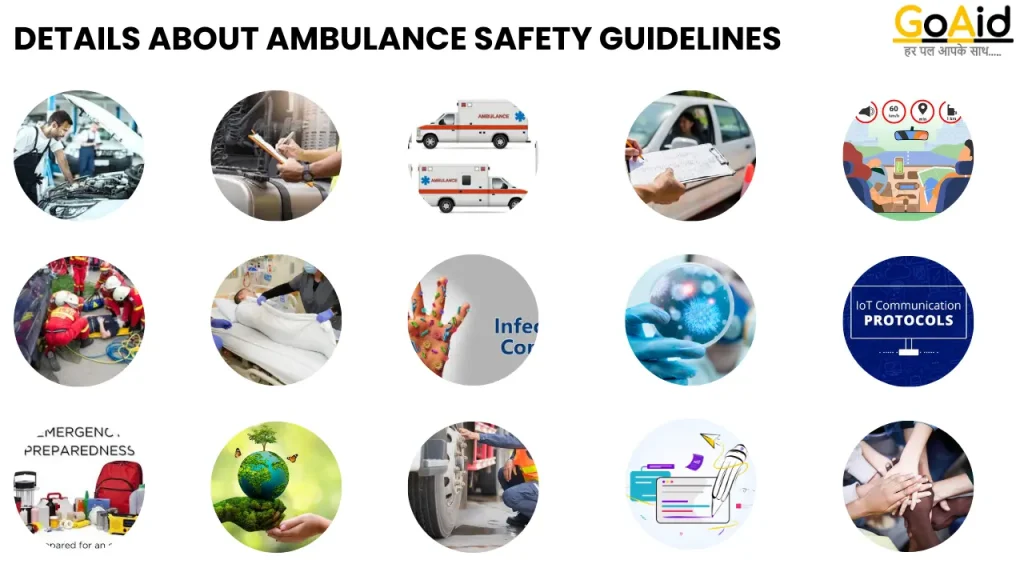
After knowing about the standard protocols for paramedics to follow, now itŌĆÖs time to know about the Ambulance Safety Guidelines that every ambulance service provider should follow. Ambulance safety guidelines are essential protocols designed to ensure the safety of both patients and EMS personnel during emergency transport. These guidelines encompass various aspects:
- Vehicle Maintenance: Regular inspection and maintenance of ambulances to ensure mechanical reliability and safety features (e.g., brakes, lights, sirens).
- Equipment Check: Verification of medical equipment functionality and adequate supply levels before each shift and after every use.
- Ambulance Design: Optimization of vehicle design for patient comfort, secure immobilization, and accessibility (e.g., stretcher, seating arrangements).
- Driver Training: Comprehensive training for ambulance drivers in defensive driving techniques, emergency vehicle operations (EVO), and traffic laws.
- Safe Driving Practices: Adherence to speed limits, use of seat belts, and caution at intersections to minimize risks during transit.
- Scene Safety Assessment: Assessment of scene safety before entering potentially hazardous environments to protect personnel and patients.
- Patient Handling: Proper lifting and transfer techniques to prevent musculoskeletal injuries among EMS providers.
- Infection Control: Implementation of infection prevention measures, including the use of personal protective equipment (PPE) and proper disinfection protocols.
- Communication Protocols: Clear communication within the ambulance team and with dispatch to coordinate care and alert receiving facilities.
- Patient Monitoring: Continuous monitoring of patient vital signs and responsiveness during transport to identify and respond to changes in condition promptly.
- Emergency Preparedness: Readiness for unforeseen events through regular drills, simulation exercises, and protocols for managing medical emergencies within the ambulance.
- Environmental Safety: Awareness of environmental hazards (e.g., weather conditions, road hazards) and strategies to mitigate risks during transport.
- Post-Trip Inspection: Post-trip inspection of the ambulance and equipment to identify any issues requiring maintenance or repair.
- Documentation: Accurate and timely documentation of patient care, transport details, and any incidents during the journey.
- Cultural Sensitivity: Respect for cultural differences and considerations in patient care practices.
Book Ambulance: Click Now
Conclusion
In Conclusion, the standard protocols for paramedics are crucial for ensuring consistent, efficient, and effective emergency medical care. By adhering to these protocols, paramedics can systematically assess patients, administer appropriate treatments, and safely transport individuals to medical facilities.
These guidelines not only standardize care delivery but also enhance patient outcomes by prioritizing timely interventions and minimizing risks during critical situations. Continual adherence to protocols also supports teamwork, communication with medical staff, and compliance with legal and ethical standards.
In this blog, we have provided you with all the details about the standard protocols for paramedics to follow & we hope you understood it pretty well. If you have any questions related to the Standard Protocols for Paramedics to follow, then you can ask that query in the comment box.
Also Read: Top 10 Private Cancer Hospitals in Delhi
Guidelines for paramedics outline standardized practices for patient assessment, treatment, and transport, ensuring consistent and effective emergency medical care.
Ambulance protocols encompass procedures for safe vehicle operation, patient assessment, equipment use, and communication during emergency responses.
Paramedic SOP is a set of standardized steps that paramedics follow to deliver consistent and quality emergency medical services.
EMS protocols define procedures for paramedics to assess, treat, and transport patients in various emergency situations, adhering to established medical guidelines.
Paramedic guidelines provide specific recommendations for clinical practices, while standard protocols outline broader procedural steps for emergency care delivery.
Standard protocols include patient assessment, treatment procedures, infection control measures, documentation requirements, and legal compliance guidelines.
Rules and regulations for paramedics of ambulances are typically governed by national or local EMS authorities, outlining certification requirements and scope of practice.
Standard operating procedures ensure paramedics perform tasks consistently and safely, enhancing patient care quality and operational efficiency.
Paramedics should follow guidelines for rapid assessment, prioritization of care, effective communication, and proper documentation during emergencies.
Ambulance paramedic standard guidelines focus on ensuring patient safety, medical efficacy, and compliance with regulatory requirements during emergency responses.

